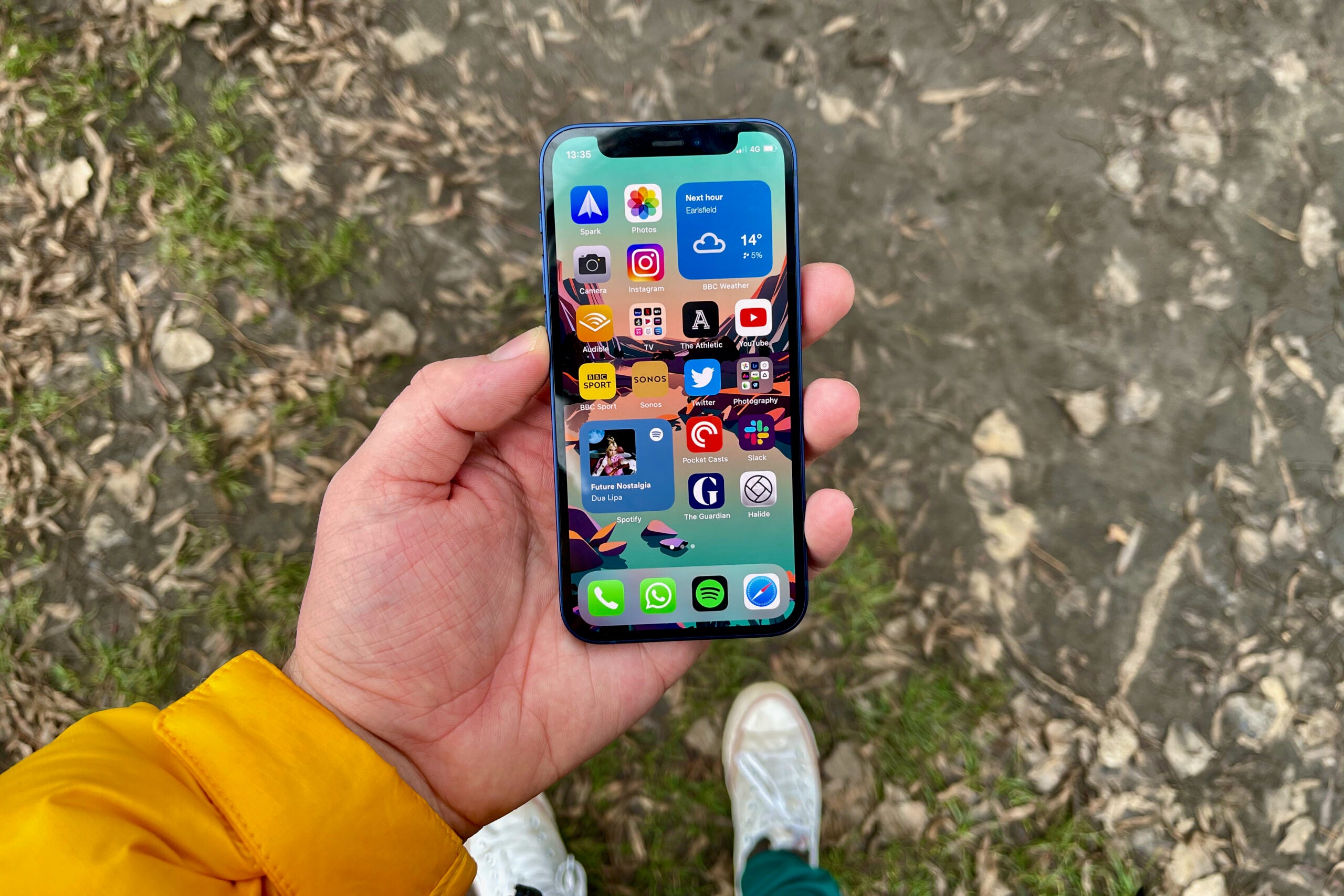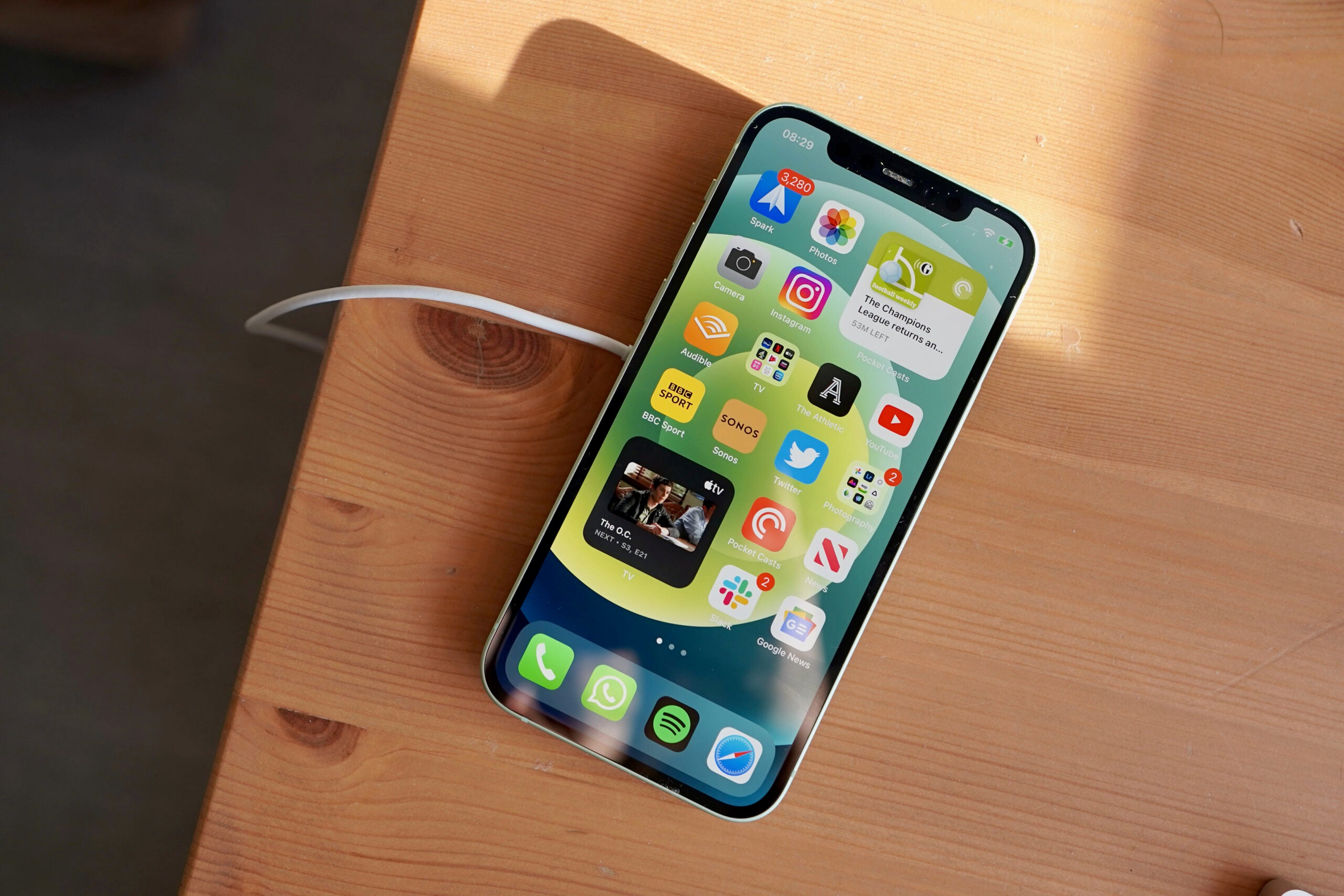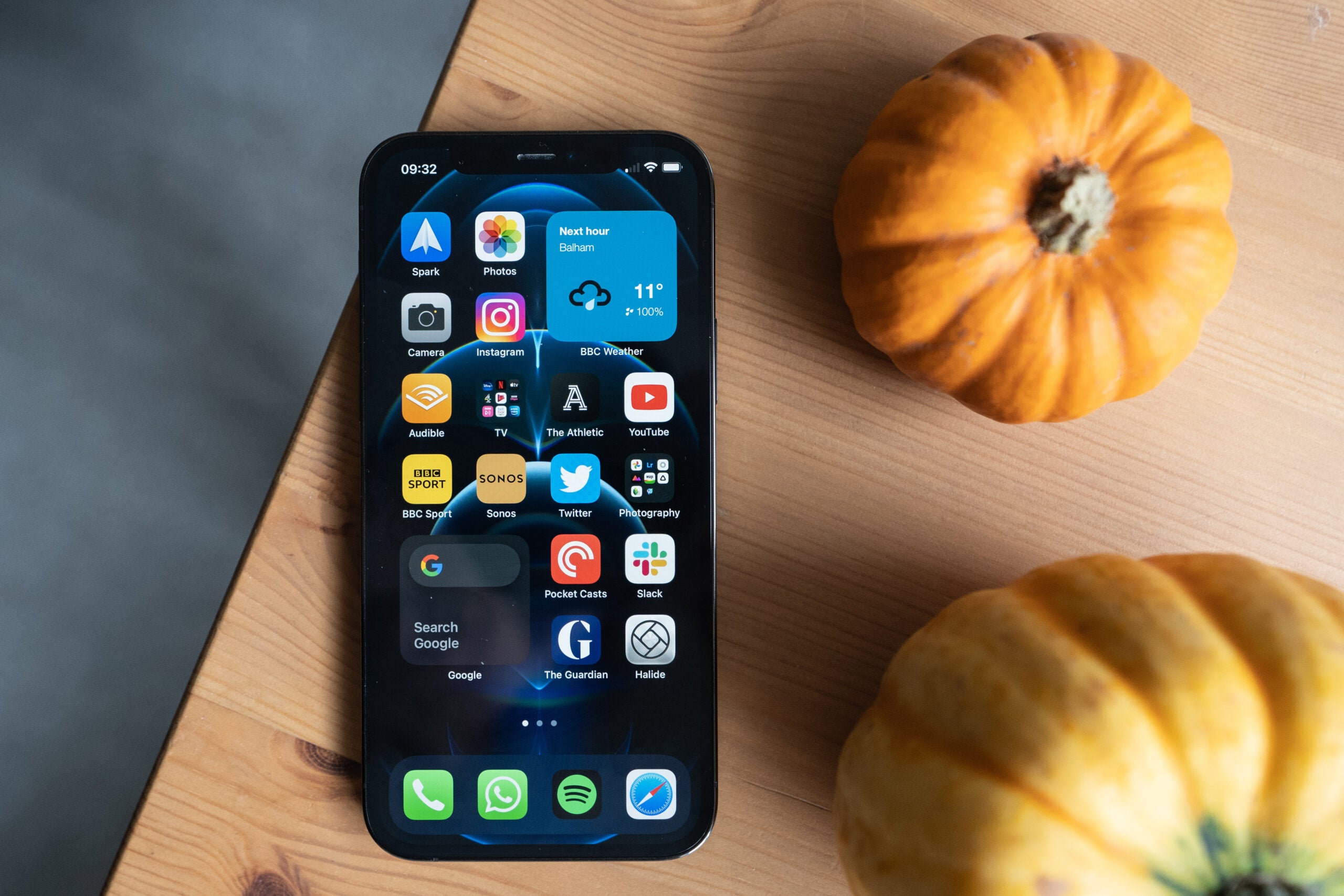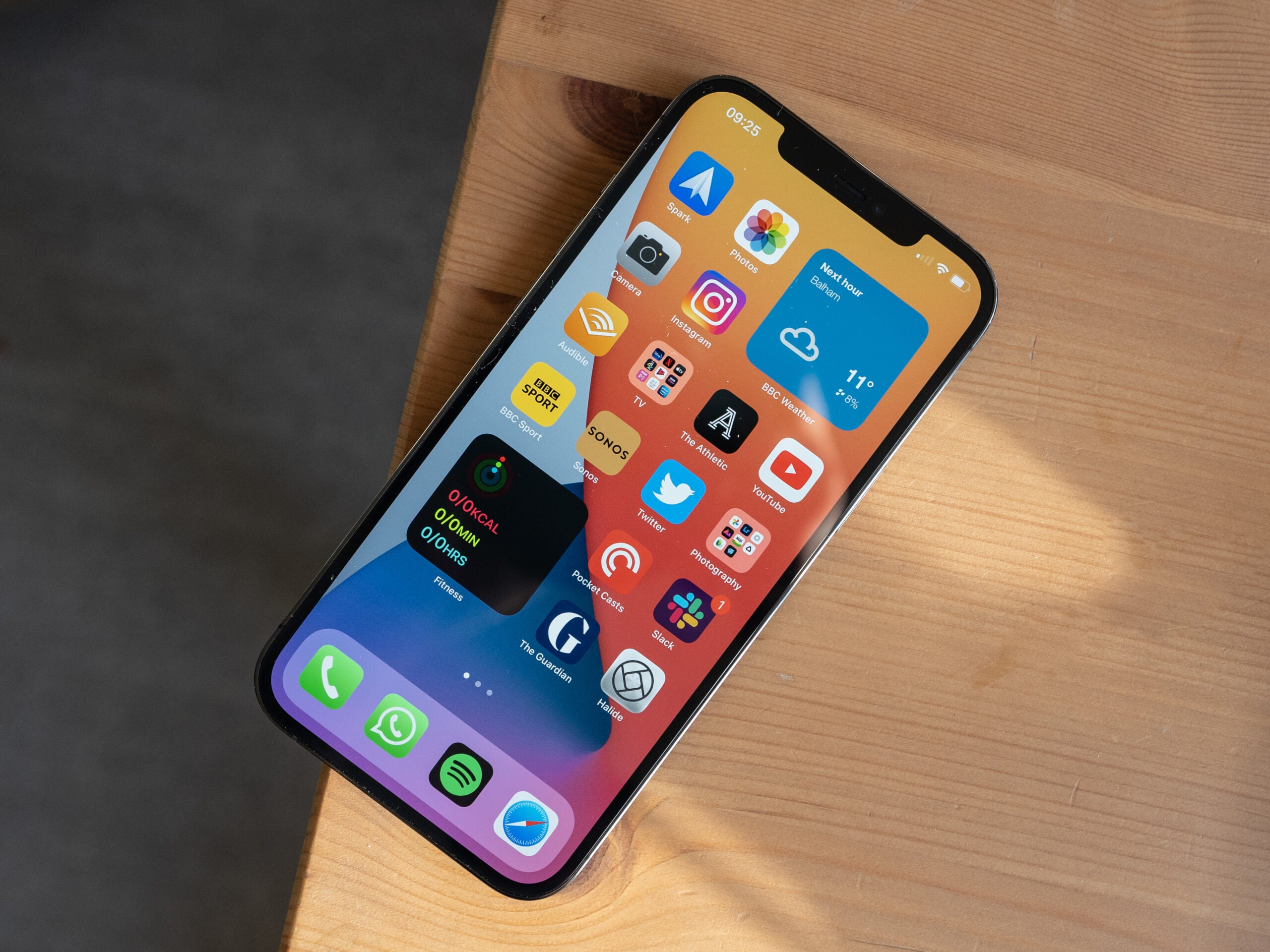Apple AirTag Review
Apple’s long-awaited rival to the Tile tracking device is finally here
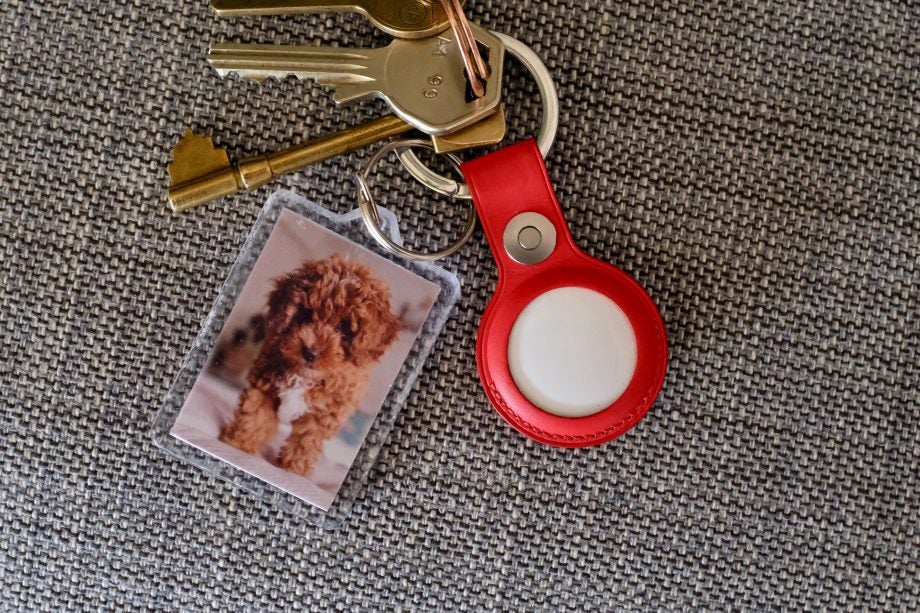

Verdict
Apple’s first tracker, AirTag, is a handy, well made device that makes it quick and easy to track down your keys when they get caught behind the cushions of your sofa. But during testing we found there are plenty of areas of improvement.
Pros
- Ties in excellently with iOS and the huge Find My network
- Precision Finding is a neat trick
- Pretty affordable
- The tracking is very good
Cons
- Design isn’t particularly well thought out in a number of ways
- Accessories required for basic functionality
- No sharing of AirTags between family members
Availability
- UKRRP: £29
- USARRP: $29
- EuropeRRP: €35
- CanadaRRP: CA$39
- AustraliaRRP: AU$45
Key Features
- Battery:The replaceable battery will last around a year
- iOS only:The AirTag works only with iOS devices running the latest version, no Android support here
- Connectivity:The AirTag uses Bluetooth LE, UWB and Apple’s Find My network
Introduction
Apple AirTags are the iPhone maker’s long awaited gadget tracker and Tile rival.
This is one of the simplest and cheapest Apple products I’ve ever reviewed. It’s a small, circular item tracker that you can attach to keys, bags and other items you’re liable to misplace or lose.
For £29/$29/€35 for a single unit or £99/$99/€119 for a pack of five, this dinky accessory appears to be the perfect purchase alongside any of the best iPhones we’ve reviewed or new iPad Pro 2021. But is it reliable enough to trust if you’re often clumsy with your possessions? I put them to the test to find out.
Design – The AirTag is tiny and typically Apple
- Small, circular design
- Can be engraved
- Only one colour
The AirTag itself is a ridiculously simple item, but the combination of a white plastic front with a logo-adorned shiny metal back gives it a very Apple look.
I’d say the AirTag is roughly the size of a two pound coin, or a large coat button. And it does need to be small, since the idea is to attach it to easily lost items without it getting in the way.
While it’s small, the AirTag is a little on the thick side. Before I’d actually got an AirTag, I did think about placing one inside my wallet, but its thickness makes this a no-go unless you have a roomier purse. I’m a big fan of Tile’s slim trackers, which are designed to easily slide into wallets and purses so this was a minor annoyance during testing.
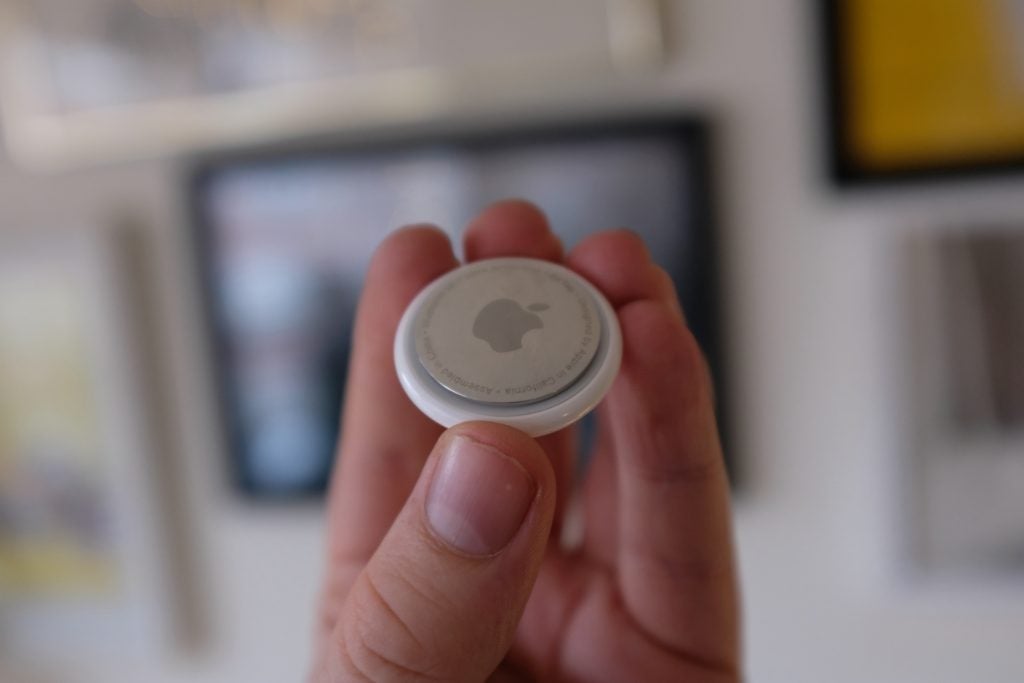
The back of the AirTag pops off easily to reveal the internal replaceable CR2032 battery. Apple claims an AirTag will last a year before the battery requires replacing, and you’ll receive a buzz on your iPhone when the time comes.
It’s nice to see Apple using a replaceable battery, since not only are these coin-cell batteries easy to find and cheap (you can buy a 10-pack from Amazon for about £/$5), it means you don’t need to worry about charging the device. Nor will you need to be concerned about the Tag getting wet, since it comes with an IP67 rating. This means it can survive the odd downpour, but not full on submersions for extended periods.
There’s only a single colour of AirTag available, which is slightly odd for a company that’s offering numerous products from the AirPods Max to the new M1 iMac in vivid hues. However, you can engrave an emoji or up to three characters on the white plastic side, if you buy it through Apple’s online store.
The AirTag is being sold alongside a number of Apple accessories, and as I mentioned earlier, you’ll at least want a keyring if you’re aiming to attach these to a set of keys. The Leather Keyring looks great – but the price feels far too high.
The stainless steel rear of the AirTag is one area that stands out for displaying little thought in terms of its design. I’ve had an AirTag attached to my keys for about a week now, and already the metal back is covered in scratches – it looks like I’ve been using it for years. This was unavoidable, considering it’s constantly rubbing up against keys, which makes me question the design choice.
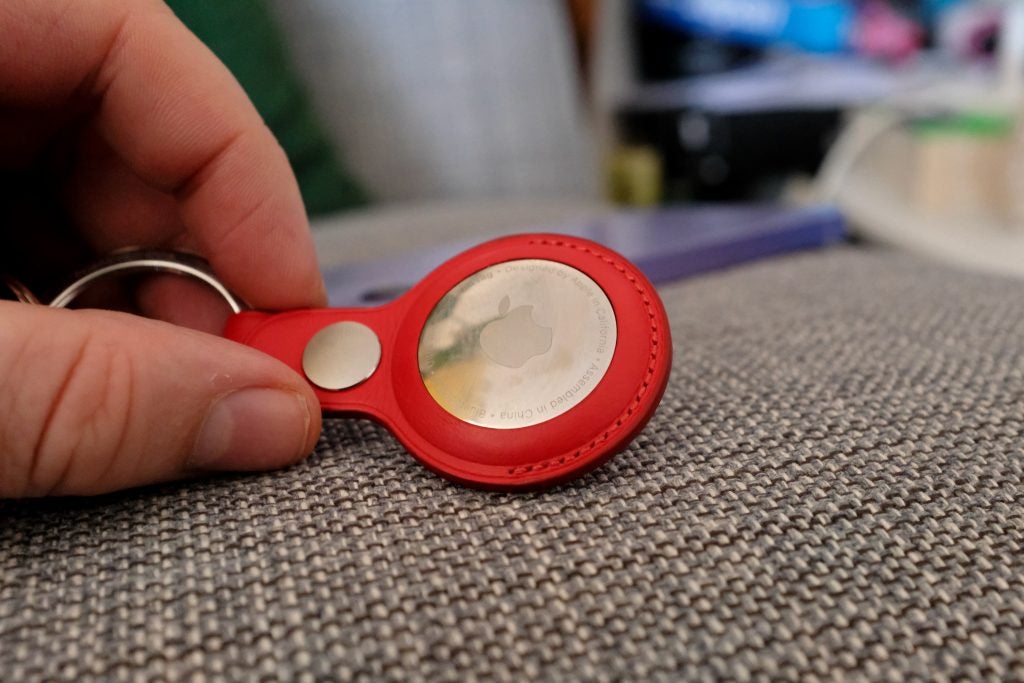
Another design fault is the fact that there’s no way to attach an AirTag directly to a pair of keys without buying an additional case. Both the Tile Pro and Samsung’s Smart Tag have built-in key ring holes. The AirTag does not.
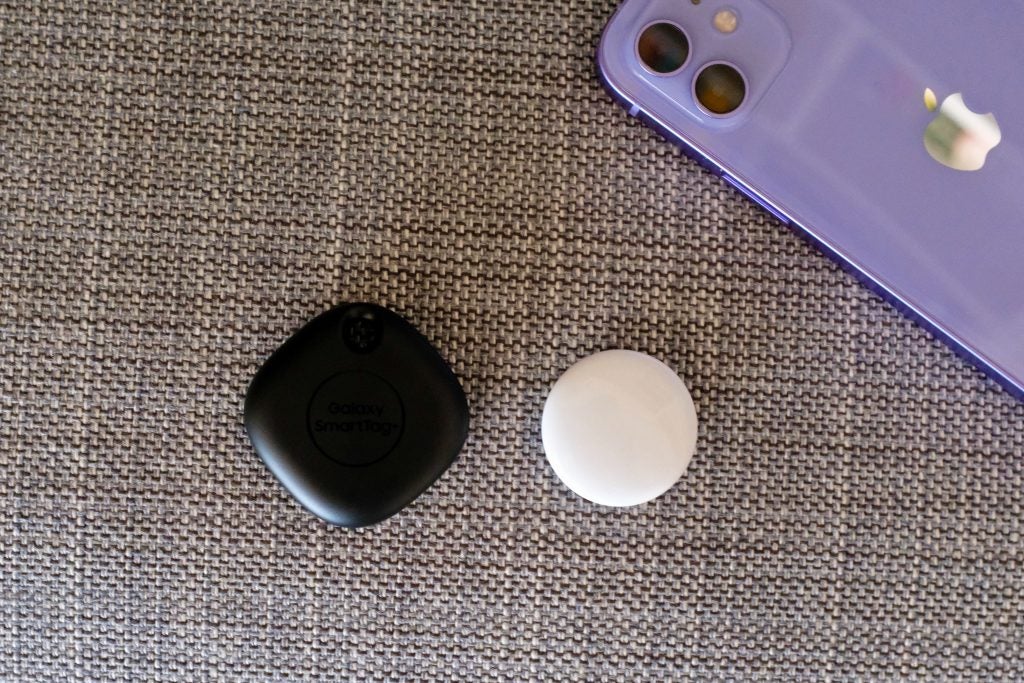
To affix the AirTag to my keys, I’ve been using Apple’s Leather Key Ring ($/£35), which is actually pricier than the tracker itself. Thankfully, plenty of cheaper options have already started cropping up elsewhere, while Apple also sells a Belkin plastic version for about £/$10.
Setup and Features – The integration with iOS and Find My is what makes AirTag tick
- Setup is very easy
- Only works with iOS 14.5
- Uses Bluetooth LE, UWB and the Find My network
If you’ve ever set up a pair of AirPods, then the process of connecting an AirTag to your iPhone running iOS 14.5 is very much the same. Just bring the dinky tracker up to the side of your handset (I found popping it next to the power button worked best) and you’ll see a pop-up on the screen. It will then connect to your iCloud account and be visible through the Find My app. All-in-all, the setup took about 2 minutes.
In the most basic sense, the AirTag is a Bluetooth tracker you attach to an item you want to keep an eye on. It uses its Bluetooth connectivity, along with the wider Find My network (Apple says this features over a billion devices) to help you locate an item if it happens to go missing. It also has something called UWB (ultra-wideband) to provide a more precise location of an item for those who have an iPhone 11 or newer, and who may be fairly close to the lost item in question.
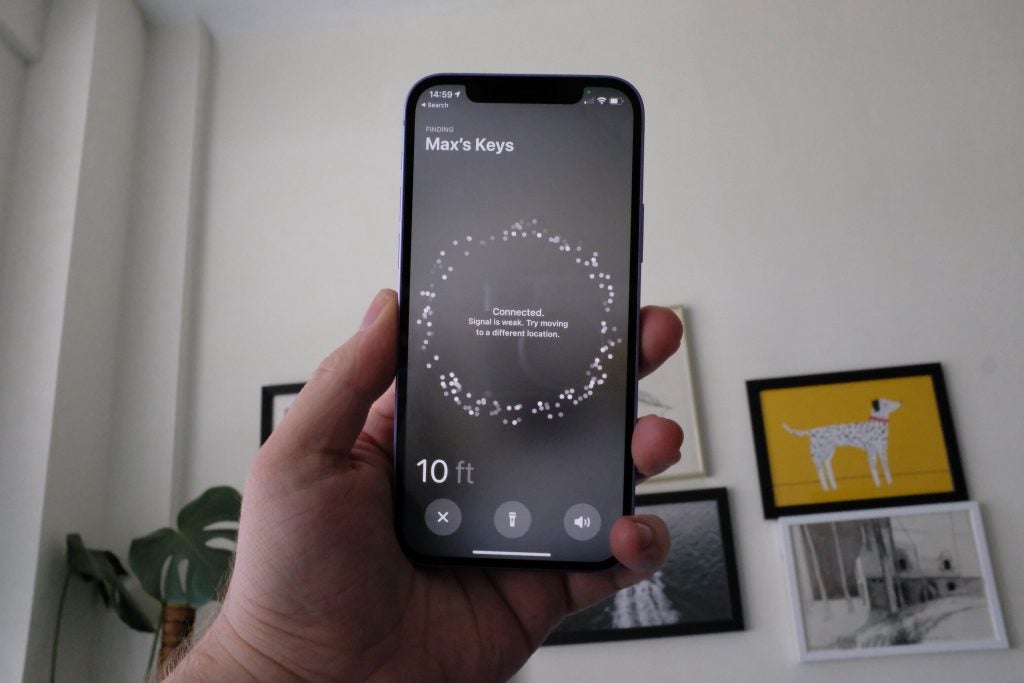
The AirTag does not have GPS, so it isn’t really ideal for tracking something like a pet. You could stick one on your dog, but you’d only be able to track the animal if you’re either within Bluetooth range or if they happen to become lost right by someone else using an iPhone. You can’t share an AirTag through the Apple Family Sharing service, so two people couldn’t both have access to one AirTag that’s on a shared pair of keys and a suitcase.
The most obvious items that benefit from having an AirTag attached are a set of keys, a rucksack or a larger suitcase, for example. If you often misplace keys around your home then this is a great way of finding them – most likely down the back of a sofa.
When you do lose an item, you simply go into the Find My app, select the AirTag and set it to Lost. You can play a sound through the AirTag, which is surprisingly shrill and noticeable, or navigate towards it if it’s in range.
Those with an iPhone 11 or newer can also use Precision Finding. This uses the UWB tech along with the U1 chip inside the phone and some AR UI elements to guide you accurately to an AirTag – as long as you’re very close to it. In my experience this works well, with clear instructions and directions along with a measure of how far away you are from the AirTag.
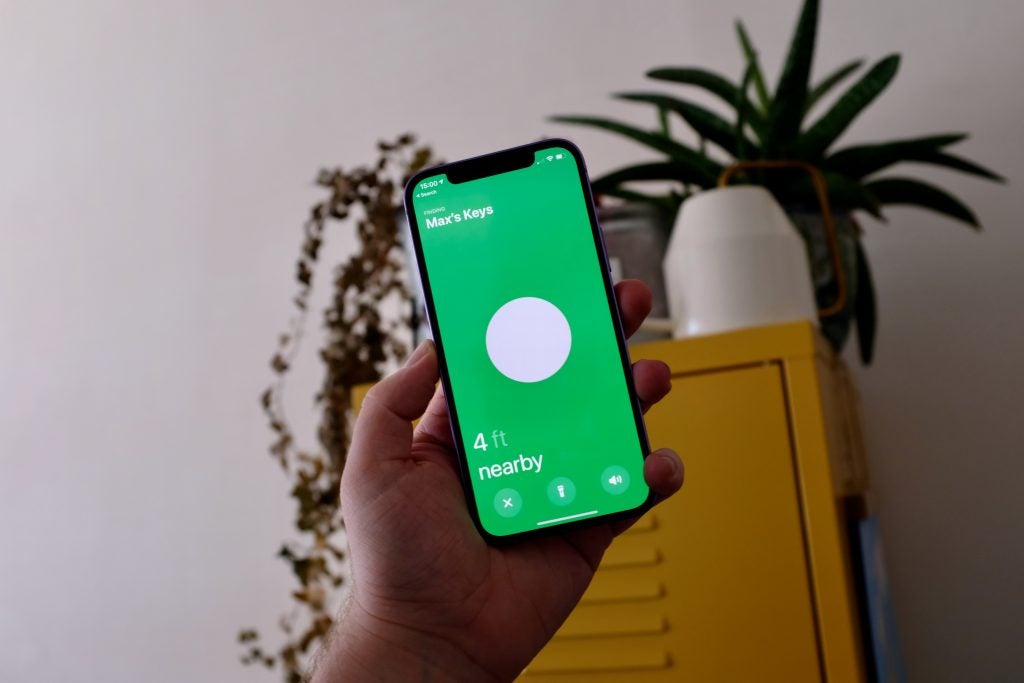
What the AirTag can’t do is ping your phone when you move far from it. This would be a welcome feature for those instances you might leave your bag in a cafe, for example. I’d also like to use the AirTag as a way of finding a misplaced phone, by sending a sound the other way.
Inside the AirTag sits an NFC chip, so if you do lose your keys or bag with one attached and someone finds them, they can tap the tag on either an iPhone or Android phone to display a note showing your contact details. This is the only way an AirTag can interact with an Android phone.
It’s important to note that these aren’t meant to be used to, say, keep an eye on your kids. As with any item that’s intended to track something else, the privacy risks are high, and Apple has added in a number of measures to ensure an AirTag isn’t used maliciously. Whether these safeguards go far enough is up for debate, however, with this Washington Post article claiming they’re not it’s a point worth considering if you’re privacy minded.
When an AirTag becomes separated from the iPhone to which it’s connected, it will eventually (Apple says after a few days) make a noise to let the person know it’s there. Taking so long for this chime to sound feels odd, and there are definitely ways it could be used to track a person without them knowing.
To get a good idea of how easy it is to find something with an AirTag attached, I enlisted my partner to hide a unit in the general vicinity of our flat. Then I set about trying to find my keys. The first attempt was met with failure, since leaving the AirTag in the middle of an empty park left no nearby devices to ping the Find My network. This is probably asking too much of the AirTag, but leaving my keys in the park is something I do more than I care to admit.
I was more successful the second time round, when the Tag was left on a street full of houses (and iPhones). Once I was about 9ft away, the Precision Finding feature led me directly to my keys.
Tile has a UWB tracker on the way; however, this likely won’t be able to use the Precision Finding feature even though it can, in theory, connect to the Find My app.
Nevertheless, I think of the AirTag as more of a handy addition rather than a vital security tool. If it was attached to a bag that was stolen, the thief could simply remove the AirTag’s battery to render it useless. If you were to instead conceal the AirTag inside, a passerby who finds the bag might not know how to contact you if the tracker isn’t visible.
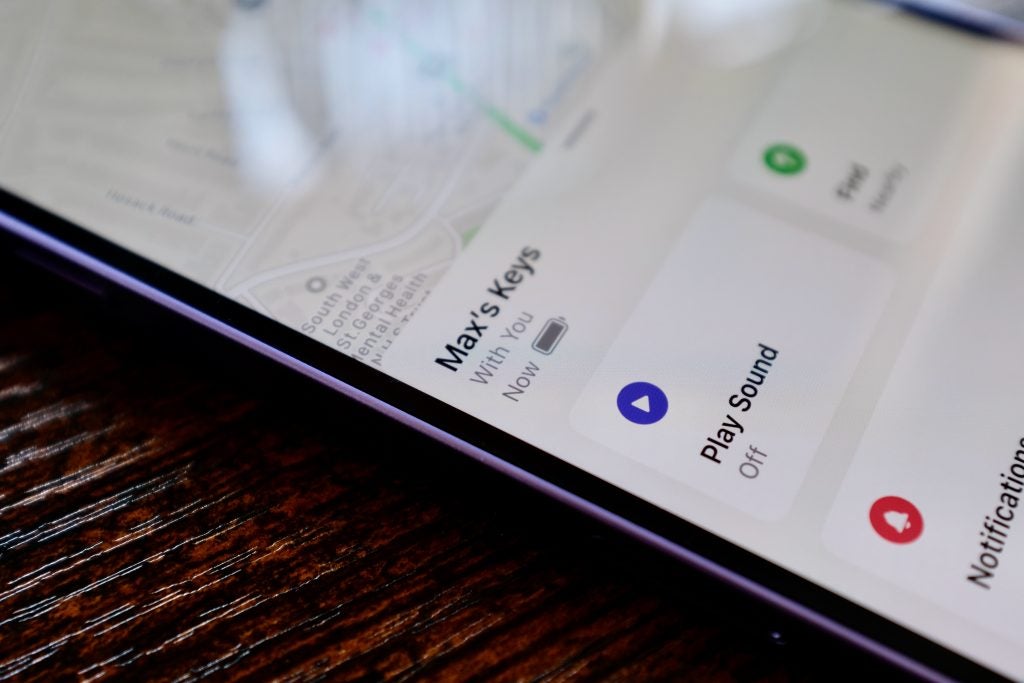
Conclusion
The AirTag is the definition of an Apple product. It ties in so tightly with the iOS ecosystem that once you have a unit attached to your keys, bags and so on, it will be even more difficult for you to switch away from an Apple phone.
AirTags are handy, and the implementation is good, even if there are plenty of areas of improvement. Pop one on your keyring for a bit of extra peace of mind – and to quickly track down your keys when they get caught behind the cushions of your sofa. Just don’t expect it to guarantee you’ll be able to pin-point a rucksack if you leave it on the train.
Deals
Should you buy it?
You’re a forgetful iPhone user The AirTag is a great way to locate your keys or keep an eye on your bag from an iOS 14.5 device. The extra integration with Apple’s software, especially the Precision Finding tool on iPhone 11 and newer, makes this a better buy than the competing Tile.
You want a tracker that slides right on to your keys The AirTag itself is fairly affordable; however, if you want to get the most functionality from it – say, attach it to keys or the outside of a bag – then you’ll need to buy accessories. If you want Apple’s keychain, for instance, each AirTag will cost a lot of more.
Verdict
The AirTag is a handy tool for keeping an eye on valuables and a worthy buy to go alongside an iPhone or iPad.
FAQs
The AirTag connects to an iOS 14.5 device via Bluetooth and shows your items location in the Find My app
You can buy a single AirTag for £29/$29/€35 or a five pack for £99/$99/€119
AirTags don’t work with Android and need an iOS 14.5 device to be set up

